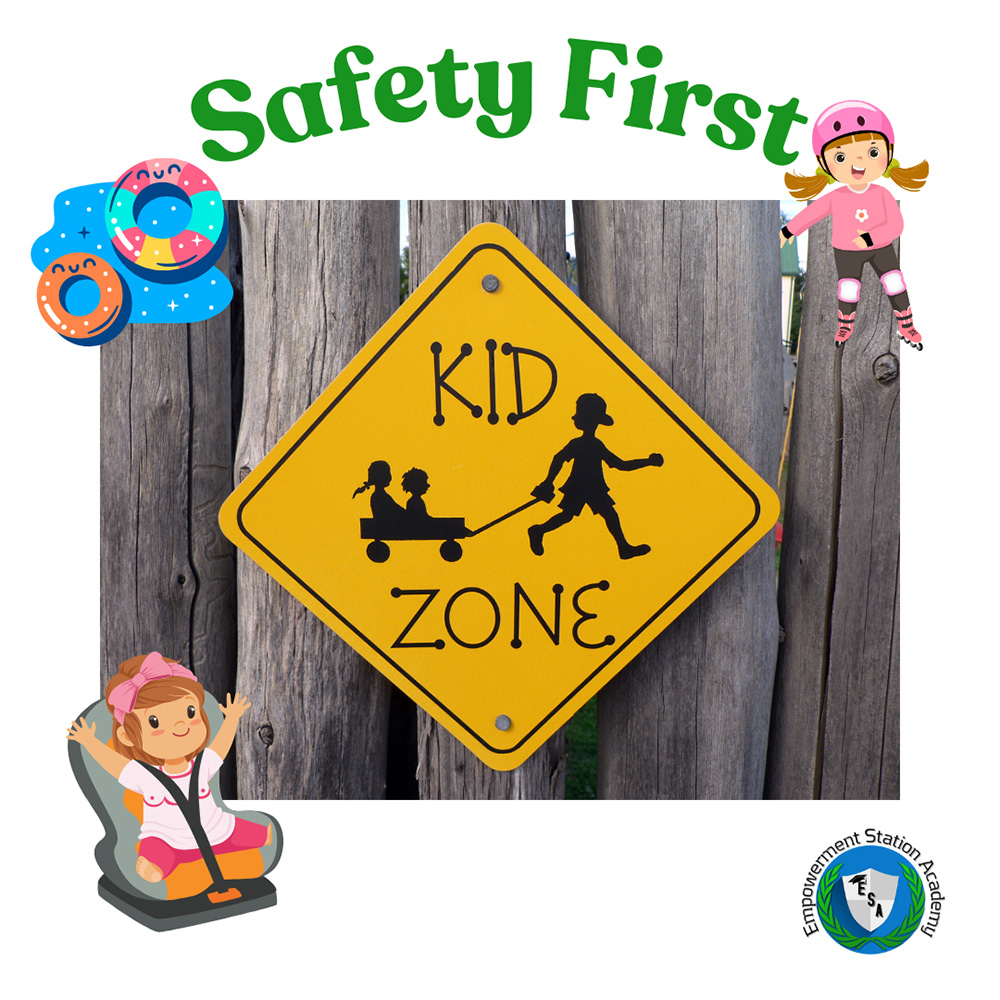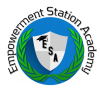- +1 662 617-8303
- empoweredforlifeinc@gmail.com
- Mon - Fri: 6:30 AM - 6:00 PM
Keep Your Little One Safe 10 Essential Tips for Toddler Safety
Keep Your Little One Safe 10 Essential Tips for Toddler Safety
April 4, 2024
Introduction
One of the greatest joys—and challenges—of being a parent is watching your toddler explore the world around them. This age of discovery, filled with curiosity and boundless energy, also presents numerous safety risks. From staircases to electrical outlets, everyday environments hide potential hazards for adventurous little ones. This blog post aims to provide parents with essential safety tips for toddlers, helping you create a safer home and giving you peace of mind.
In this guide, you’ll learn practical, easy-to-implement strategies to keep your toddler safe both at home and outside. From baby-proofing techniques to outdoor safety measures, we’ll cover it all. Read on to find out how you can ensure your toddler’s explorations are both fun and secure.

Understanding Toddler Curiosity
Why Curiosity Is Both a Blessing and a Challenge
Toddlers are naturally curious. This trait is vital for their cognitive development, but it also exposes them to various risks. Understanding the balance between encouraging exploration and ensuring safety is key.
Developmental Milestones That Increase Risk
The transition from crawling to walking and eventually running introduces new safety challenges. Each developmental milestone brings unique risks that parents need to address proactively.
Harnessing Curiosity Safely
Encourage your toddler’s curiosity by creating a safe environment filled with stimulating toys and activities. This approach not only keeps them engaged but also minimizes the likelihood of accidents.
Baby-Proofing Your Home
Securing Furniture and Appliances
Start by anchoring heavy furniture and appliances to the wall. This prevents them from tipping over if your toddler tries to climb on them.
Using Safety Gates
Install safety gates at the top and bottom of stairs to prevent falls. Gates can also section off rooms that contain potential hazards, like the kitchen or bathroom.
Locking Cabinets and Drawers
Using child-proof locks on cabinets and drawers ensures that dangerous items, such as cleaning supplies and sharp utensils, are out of reach.
Electrical Safety Measures
Covering Electrical Outlets
Use outlet covers or caps to block access to electrical outlets. Curious toddlers might try to insert objects into outlets, posing a severe risk of electric shock.
Managing Cords and Wires
Keep electrical cords out of your toddler’s reach and securely fastened. Loose cords can be tempting for toddlers to pull, and they pose a strangulation hazard.
Using Safe Devices
Opt for child-safe electrical devices and gadgets. Ensure that any nightlights or baby monitors are designed with safety features to prevent accidents.
Kitchen Safety Tips
Keeping Sharp Objects Out of Reach
Store knives, scissors, and other sharp objects in high cabinets or locked drawers. Make sure your toddler can’t access these items while you’re cooking.
Handling Hot Surfaces and Liquids
Always use the back burners on your stove and turn pot handles inward to prevent accidental spills. Keep hot liquids far from counter edges.
Safe Storage of Cleaning Supplies
Store cleaning supplies in a locked cabinet, preferably one that’s high up and out of your toddler’s reach. Consider using non-toxic, child-safe cleaning products.
Bathroom Safety
Supervision During Bath Time
Never leave your toddler unattended in the bathtub. Even a small amount of water can be dangerous. Always keep a hand on your child during bath time.
Safe Storage of Toiletries
Store toiletries, such as razors and hairdryers, out of reach. Use cabinet locks to ensure your toddler can’t access potentially dangerous items.
Preventing Slips and Falls
Place non-slip mats in the bathtub and on the bathroom floor to prevent falls. Make sure the bathroom floor is dry before allowing your toddler to walk on it.
Bedroom Safety
Choosing a Safe Crib
Ensure that your crib meets current safety standards. The slats should be no more than 2 3/8 inches apart to prevent your toddler from getting stuck.
Eliminating Suffocation Hazards
Keep soft toys, pillows, and heavy blankets out of your toddler’s crib. These items can pose a suffocation risk.
Anchoring Furniture
Just like in other parts of the house, anchor furniture in your toddler’s bedroom to prevent tipping. Avoid placing climbable objects near windows.
Outdoor Safety
Supervision at All Times
Always supervise your toddler when playing outside. Even a seemingly safe backyard can have hidden dangers.
Safe Play Equipment
Ensure that any play equipment, such as swings and slides, is age-appropriate and well-maintained. Regularly check for loose bolts or broken parts.
Pool Safety
If you have a pool, install a fence with a self-latching gate. Always supervise your child near water and consider enrolling them in swimming lessons.
Car Safety
Proper Car Seat Installation
Make sure your toddler’s car seat is correctly installed and appropriate for their age, weight, and height. Follow the manufacturer’s guidelines closely.
Keeping the Car Locked
Always lock your car doors and trunk, even when parked in your driveway. Curious toddlers might wander into the vehicle, leading to potential hazards.
Safe Temperature Management
Never leave your toddler alone in the car, especially in extreme temperatures. Cars can heat up quickly, leading to dangerous conditions.
Social Safety
Teaching Stranger Danger
Educate your toddler about the dangers of talking to strangers. Use simple language and role-playing to help them understand the concept.
Supervised Social Interactions
Always supervise your toddler during playdates and social gatherings. Ensure they are interacting in a safe environment.
Understanding Boundaries
Teach your toddler about personal boundaries and respect for others. This lesson is crucial for their social development and safety.
Emergency Preparedness
Basic First Aid Knowledge
Equip yourself with basic first aid knowledge. Knowing how to handle minor injuries can make a significant difference in emergency situations.
Emergency Contacts
Keep a list of emergency contacts readily accessible. Ensure that babysitters and caregivers know where to find this information.
Practicing Emergency Drills
Practice emergency drills with your family. Teach your toddler what to do in case of a fire, earthquake, or other emergencies.
Health and Hygiene
Proper Handwashing Techniques
Teach your toddler the importance of handwashing, especially before meals and after using the restroom. Use songs or games to make it fun.
Safe Use of Sanitizers
If using hand sanitizers, ensure they are safe for children. Supervise your toddler to make sure they are using the sanitizer correctly.
Regular Health Check-ups
Keep up with regular health check-ups and vaccinations. A healthy toddler is a safer toddler.
Building a Safety Network
Communicating with Caregivers
Ensure that all caregivers are aware of your safety practices. Consistent safety measures across different environments are crucial for your toddler’s well-being.
Community Resources
Take advantage of community resources, such as parenting classes and safety workshops. These can provide valuable information and support.
Staying Informed
Stay updated on the latest safety guidelines and product recalls. Being informed helps you make better decisions for your toddler’s safety.
Conclusion
Navigating the world of toddler safety can feel overwhelming, but taking proactive steps can make all the difference. By implementing these tips, you create a safer environment for your little explorer to grow and learn. Remember, the key to effective toddler safety is vigilance and consistency.
If you’re looking for more personalized advice, consider booking a consultation with one of our child safety experts. Together, we can ensure that your home is as safe and nurturing as possible for your growing child.
For more information about ESA, and to find out why we offer the perfect solution to meet your child’s early childhood development needs, please contact us at (662)694-9594 or (662)617-8303. You can also email us at empoweredforlifeinc@gmail.com. Contact us today!
We currently have 2 locations to conveniently serve you:
ESA Starkville
732 Whitfield St
Starkville, MS 39759
